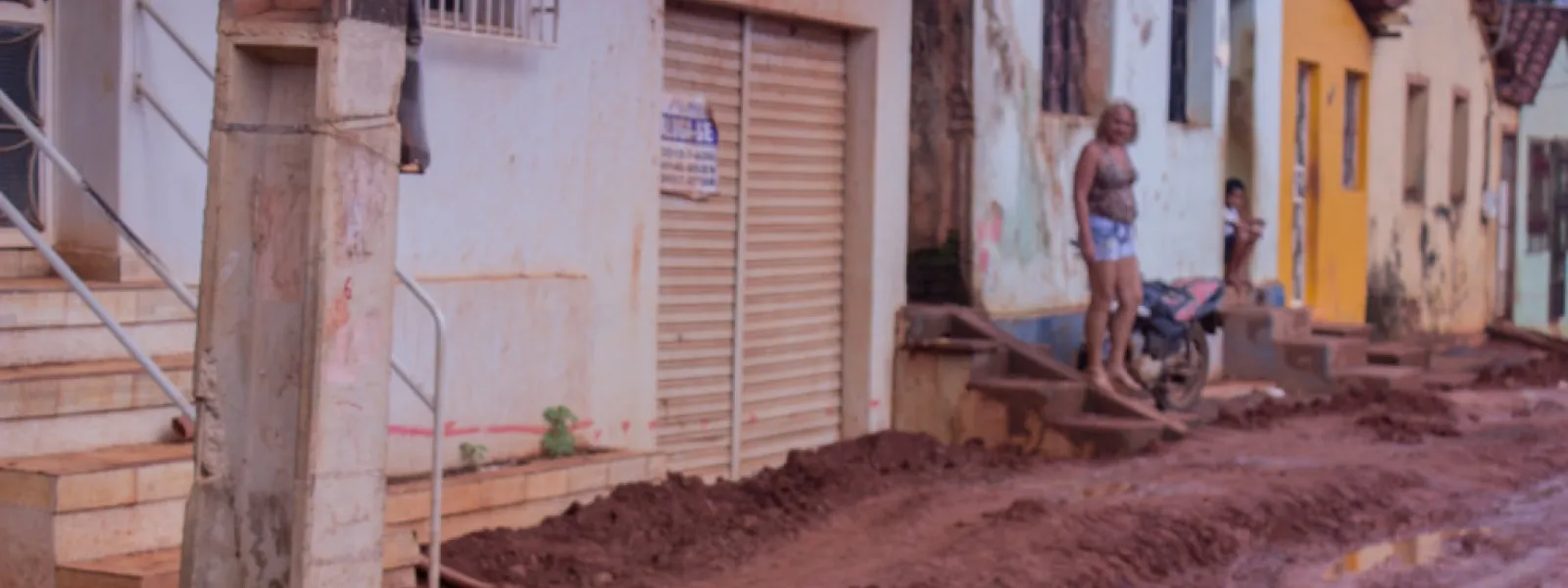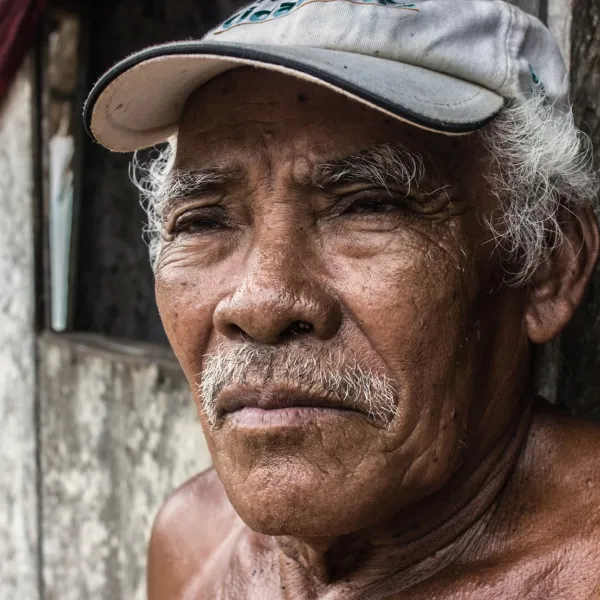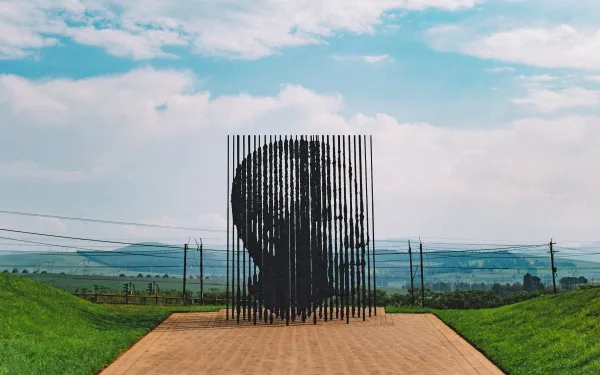
Project
Photo: Maíra Irigaray / Amazon WatchHolding Brazil accountable for the Belo Monte Dam
When fully operational, Belo Monte will be the third-largest dam in the world, constructed in one of the most important ecosystems on the planet: the Amazon rainforest. It sits on the Xingu River in Pará, a state in northern Brazil. The reservoir will cover 500 square kilometers of forest and farmland—an area the size of Chicago.
For the people of the Xingu, construction of Belo Monte has meant loss of access to water, food, housing, work and transportation. At least 20,000 people have been displaced.
The government and construction consortium began to construct the dam without first consulting the people of the region, many of whom are indigenous. They flouted international human rights law, which requires the free, prior and informed consent of affected indigenous communities. Brazil also failed to comply with precautionary measures issued by the Inter-American Human Rights Commission, which were intended to protect the life, health, and integrity of local communities.
Though Belo Monte began operations in May 2016, it is not yet operating at full capacity. In April 2016, a federal court suspended the dam's operating license because the consortium in charge did not complete basic sanitation works in Altamira, the city nearest to and most affected by the dam.
Partners:

Related projects
Groups appeal to UN to halt imminent forced evictions of indigenous Ngöbe families
Appeal to the UN seeks to stop eviction of Panamanian community. Panama, Washington D.C., San Francisco, Lima. Environmental and human rights organizations submitted an urgent appeal to United Nations Special Rapporteurs on behalf of members of the indigenous Ngöbe community - the community faces imminent forced eviction from their land for the Barro Blanco hydroelectric dam project in western Panama. The eviction would force Ngöbe communities from their land, which provides their primary sources of food and water, means of subsistence, and culture. The urgent appeal, submitted by the Ngöbe organization Movimiento 10 de Abril para la Defensa del Rio Tabasará (M10) and three international NGOs, the Interamerican Association for Environmental Defense (AIDA), the Center for International Environmental Law (CIEL), and Earthjustice, asks the Special Rapporteurs to call upon the State of Panama to suspend the eviction process and dam construction until it complies with its obligations under international law. Given that the project is financed by the German and Dutch development banks (DEG and FMO, respectively) and the Central American Bank for Economic Integration (CABEI), the groups also urge the Special Rapporteurs to call on Germany, the Netherlands, and the member States of CABEI to suspend financing until each country has taken measures to remedy and prevent further violations of the Ngöbe's human rights. The forced evictions of the Ngöbe are the most recent threat arising from the Barro Blanco project. These evictions raise imminent violations of their human rights to adequate housing; property, including free, prior and informed consent; food, water and means of subsistence; culture; and education. "Our lands and natural resources are the most important aspects of our culture. Every day, we fear we will be forced from our home,"said Weni Bagama of the M10. The appeal highlights the fact that the Ngöbe were never consulted, nor gave consent to leave their land. "Panama must respect the rights of the Ngöbe indigenous peoples and refrain from evicting them. Executing these forced evictions will constitute a violation of international human rights law," said María José Veramendi Villa of AIDA. Also central to the appeal is the role of governments whose banks are funding the dam. "Under international law, States must ensure that their development banks do not finance projects that violate human rights, including extraterritorially. Forced eviction of the Ngöbe without their consent is reason enough to suspend financing of this project," said Abby Rubinson of Earthjustice. Barro Blanco's registration under the Kyoto Protocol's Clean Development Mechanism (CDM) is another point of concern. "Panama's failure to protect the Ngöbe from being forcibly displaced from their land without their consent casts serious doubt on the CDM's ability to ensure respect for human rights under international law," said Alyssa Johl of CIEL. "CDM projects must be designed and implemented in a manner that respects human rights obligations."
Read more
Mandela: lessons in tribal leadership to effectively protect the environment
“It always seems impossible until it becomes reality.” —Nelson Mandela Nelson Mandela died one month ago. Much has been written about him since then, and he has been globally honored like none other. Despite possible year-end amnesia and at the risk of sounding cliché, I am writing this post in his honor. I’m particularly interested in highlighting four leadership qualities Mandela possessed, and pointing out how those same qualities can help us be more effective environment defenders. Nelson Rolihlahla Mandela was born in Qunu, a Xhosa community in the state of Transkei, in the southeastern part of South Africa. Mandela’s birth name Rolihlahla means “troublemaker,” in the Xhosa language. But a schoolteacher began calling him Nelson, according to the custom of calling children by their English, rather than African, names. Another of Mandela’s names—Dalibunga (or founder of the bunga)—was given to him during a traditional initiation ceremony at the age of 16. He was also called Madiba, a name given by his tribe in honor of a Tembu chief who ruled during the 18th Century. According to tradition, Mandela was destined to be an advisor to the Tembu king. But he ended up being a leader far beyond the borders of the Transkei region, and changed the world even beyond South Africa. He was a leader of reconciliation and compromise. He had an enormous capacity for forgiveness and an ability work peacefully with, rather than seek revenge against, those who oppressed his people for centuries, and imprisoned him for 27 years. In what follows, I’d like to discuss four characteristics that Mandela exemplified. If we emulate these qualities, we can, like Mandela, help make the world a freer and more just place. 1. Values and a common cause as an absolute guide to decisions “There is no easy walk to freedom anywhere, and many of us will have to pass through the valley of the shadow of death again and again before we reach the mountaintop of our desires.” Mandela lived according to his values. He had the goal of ending apartheid and securing freedom for himself and his people. His desire for freedom guided each of his actions, including after he succeeded in ending apartheid in his country. Over the decades of his struggle, including more than a quarter century in prison, there were undoubtedly moments of despair and fear in which other people would have given up hope. Mandela and his colleagues, however, persisted. The cause that united them was greater than their individual will, and stronger than even Mandela himself. Although we cannot compare our work to the struggle against apartheid, we have indeed made important progress by rallying behind a common cause. One recent victory, in 2011, was a change in the Mexican Constitution in favor human rights. It would not have been possible without the joint work of our partner organizations, academia, and the Office of the High Commissioner of Mexico. 2. Conscientious, disciplined, committed and coherent “Running taught me valuable lessons. In cross-country competitions, training counted more than intrinsic ability, and I could compensate for a lack of natural aptitude with diligence and discipline. I applied this in everything I did.” Persistence and discipline were qualities that made a big difference for Mandela in reaching his goals. His commitment to every challenge, his clarity, and even his limitless stubbornness still manage to surprise us. His success was not achieved through supernatural powers, nor was there a single moment in which everything magically changed. On the contrary, Mandela’s achievements were a consequence of a life dedicated to study, work, and learning. He was constantly listening to others, building strategies, and rethinking them in order to achieve his goals. He made mistakes and bad decisions, but also had successes that collectively helped achieve his dream of freedom. Sometimes we feel that the results are impossible. In fact, they are, if we’re trying to reach them immediately. At AIDA, we have learned this in the case of La Oroya, in which we have had to be persistent and disciplined in order to achieve lasting results. With the people of La Oroya we have worked for change for 15 years, and we will continue until we achieve it. 3. All on the same side — there is no good vs. bad “If you want to make peace with your enemy, you should work with your enemy. Then he will become your partner.” I often wonder where South Africa would be if Mandela and his colleagues had not reached small agreements, if they had not overcome their many differences and moved forward. Moreover, what would have happened in that country if they had not been able to transcend hatred toward their oppressors in order to find peaceful and coordinated solutions? Surely, the outcome would have been a civil war with unimaginable consequences. One element that avoided such a catastrophe was Mandela’s constant ability to find solutions, reach agreements, maintain dialogue, and demand concrete results toward real change. No doubt, the process was not easy, quick, or smooth. But perseverance, clear goals, a desire to reach consensus, and the ability to find interlocutors made even the most complicated situations possible. When I think of our job of protecting the environment, I realize how much we lack and the great opportunity that lies before us. For example, instead of competing with colleagues at other organizations, or trying to defeat governments or corporations, we should remember that we are all working toward solutions to a common goal. The lure of “winning” and seeing others lose is powerful. But, surely, we will gain more if we work with our “enemies” and become partners instead. 4. A step back in celebration, a step forward in times of peril “It is better to lead from behind, and put others to the front, especially in celebration when good things occur. You step forward when there is danger. Then, people will appreciate your leadership.” Leadership is very different from being a dictator or a strongman. A person who is a true leader allows and encourages others to grow, develop and evolve in order to reach a common goal, even if they shine more than their bosses. Mandela was conscious of being a symbol so that everyone in South Africa could be free and treated as equals. Many times, he put that role above his own self-interest. On more than one occasion, Mandela had the possibility of improving his prison conditions or of obtaining early release. Instead, he chose to stay imprisoned because he believed that the conditions to dismantle apartheid were not met, and that the unjust system would not change if he were released. “Real leaders must be ready to sacrifice everything for the freedom of their people.” Sadly, contrary to what Mandela said, many “leaders” jump at the chance to receive medals, but have difficulty taking responsibility for the mistakes or shortcomings of their team. We must remember that the type of leadership that Mandela embodied can accomplish miracles. It translates into actions that allow changes no one would have thought possible—the fall of apartheid, for example, or a simple handshake between President Obama and Raul Castro, a symbol of reconciliation that took place at Mandela’s funeral. So, dear leaders, have a happy 2014! I invite you to consider these leadership skills and put them into practice. For your success, and for the survival of our planet!
Read moreMexican government breaches international commitments to put Veracruz Reef System at risk
Organizations denounce the incident to the Ramsar Convention, an international treaty for the protection of wetlands. By modifying the boundaries of the coral reef national park, the federal government is seeking to expand the Port of Veracruz. Mexico City, Mexico. Civil society organizations have denounced to international bodies that Mexico’s government intends to modify the boundaries of the Veracruz Coral Reef System National Park, known as PNSAV in its Spanish acronym, in order to expand the Port of Veracruz. This violates the government’s commitment to preserve and protect a wetland of global importance. Mexico’s Secretariat of Environment and Natural Resources (Semarnat) authorized the port expansion project on December 19, 2013. In response, the Interamerican Association for Environmental Defense (AIDA) and the Mexican Center for Environmental Law (CEMDA) – with support from the Veracruz Assembly of Environmental Initiatives and Defense (LAVIDA), Pobladores A.C., Paths and Meetings for Sustainable Development (SENDAS), Litiga OLE, Pronatura Veracruz and the doctor and researcher Leonardo Ortíz Lozano – filed with the Ramsar Secretariat a report on the federal government’s failure to comply with that international treaty. The Veracruz Reef System was declared a Protected Natural Area (PNA) in 1992 with the aim of protecting the human right to a healthy environment. In 2004, it was registered as a wetland of international importance on the Ramsar List. While Mexico can modify the boundaries of sites on the Ramsar List, this must be done in accordance with the grounds and procedures identified in the Ramsar Convention. However, the federal government intends to modify the area of the PNSAV, contradicting to its own actions and acting in breach of the principle of law. [1] According to public information secured from the National Commission of Natural Protected Areas (Conanp) [2], the Mexican government based its decision to amend the boundaries of the PNSAV on a so-called error clause contained in Resolution VIII.22. This clause can only be invoked when there are changes in the ecological characteristics stemming from the degradation of part of a wetland. The federal government has yet to scientifically prove that there have been any ecological changes to the detriment of the wetland. Of note, it is questionable that the Conanp decided to notify the Ramsar Convention Secretariat of the alleged error on the eve of the Semarnat’s authorization of the Port of Veracruz expansion. Another legal way to change the boundaries of Ramsar sites is if there is "urgent national interest," as contained in Resolution VIII.20. This requires a prior environmental assessment and a consultation with all stakeholders, something that has not yet happened. "The federal government is determined to illegally change the polygonal of the PNSAV every time that it is not legally possible to proceed according to the procedures established by the Ramsar Convention," said Sandra Moguel, an AIDA legal adviser. "The polygonal change and the environmental impact authorization of the proposed expansion of the Port of Veracruz are unilateral decisions by the federal government in which the arguments of the affected peoples were not taken into account," she added. The Mexican government is violating the Ramsar Convention, and hence its international obligations on the conservation of a wetland of international importance. If the amendment to the PNSAV goes through, the government will hurt the right of Mexicans – and the people of Veracruz, in particular – to a healthy environment. Because of this, AIDA and the other civil society organizations requested the Ramsar Convention Secretariat to consider as unacceptable the proposed reduction of the PNSAV’s boundaries. We also requested that these proposed changes be discussed at Ramsar’s next Conference of the Contracting Parties to be held in Uruguay in 2015. Editor's notes: 1. According to this general principle of law, the authority can only do what is expressly mandated by law. 2. Information request 1615100033713.
Read more